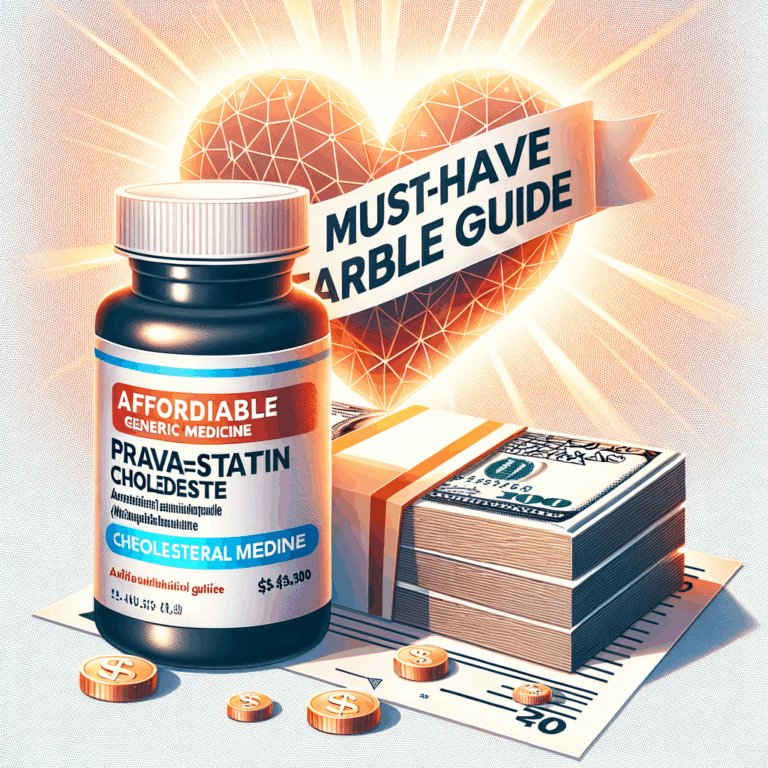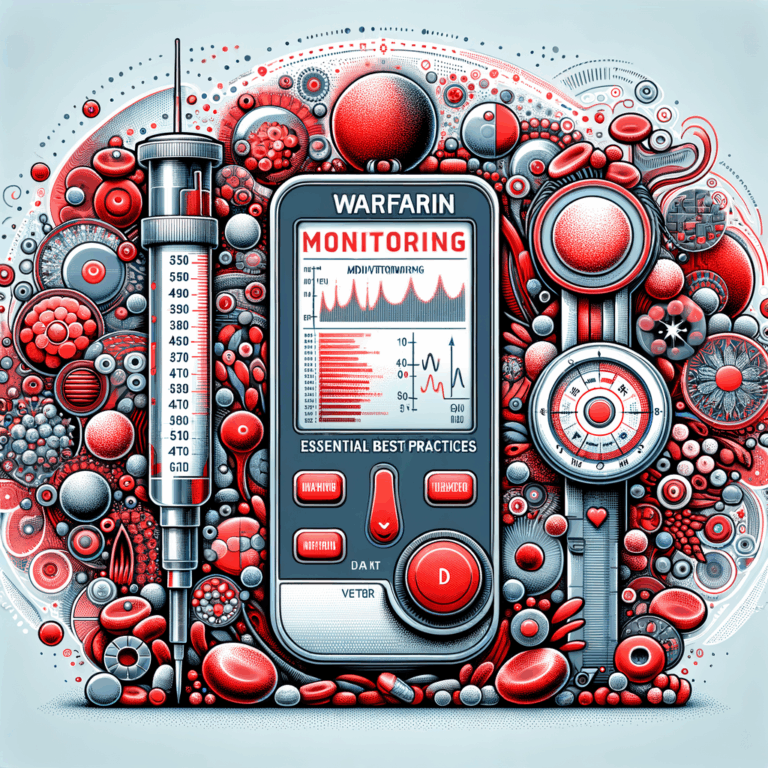
- Introduction to Prednisolone Eye Drops Guide
- What Are Prednisolone Eye Drops?
- How Prednisolone Eye Drops Work
- Medical Conditions Treated with Prednisolone Eye Drops
- When Not to Use Prednisolone Eye Drops
- Getting Started: Prescription and Consultation
- How to Use Prednisolone Eye Drops Correctly
- Dosage and Tapering: Why It Matters
- Common Side Effects
- Serious Risks and When to Seek Help
- Monitoring While on Prednisolone Eye Drops
- Interaction with Contact Lenses
- Using Prednisolone Eye Drops After Eye Surgery
- Special Populations: Children and Elderly
- Pregnancy and Breastfeeding Considerations
- Storage and Handling of Prednisolone Eye Drops
- Preventing Contamination
- Managing Missed Doses
- Alternatives to Prednisolone Eye Drops
- Combining Prednisolone with Other Eye Medications
- Cost, Access, and Insurance
- Practical Tips for Daily Use
- Traveling with Prednisolone Eye Drops
- Handling Side Effects at Home
- When to Stop Prednisolone Eye Drops
- Myths and Misconceptions
- Summary Checklist Before Starting Therapy
- Case Examples: Practical Scenarios
- How to Talk to Your Eye Doctor
- When to See a Specialist
- Table: Quick Reference for Prednisolone Eye Drops
- Frequently Asked Questions (FAQs)
- 1. Can I use prednisolone eye drops for dry eyes?
- 2. How long before I see improvement?
- 3. Can I drive after using the drops?
- 4. Are there any systemic effects?
- 5. Can steroids worsen infections?
- 6. What if I accidentally touch the dropper tip to my eye?
- 7. Can I stop the drops early when I feel better?
- 8. How often will my eye pressure be checked?
- 9. Can children use prednisolone eye drops?
- 10. Do generic prednisolone eye drops work as well as brand-name?
- Additional Questions You Might Ask
- Conclusion
- References
Introduction to Prednisolone Eye Drops Guide
Prednisolone eye drops serve as a powerful tool in treating eye inflammation. In this Prednisolone Eye Drops Guide, you’ll learn how these drops work, when they help, and how to use them safely. I’ll keep the language simple and the steps clear so you can apply the tips right away.
Many people feel unsure about steroid eye drops. Therefore, this guide aims to remove confusion. It covers uses, dosing, side effects, storage, and practical tips. You will also find answers to common questions at the end.
What Are Prednisolone Eye Drops?
Prednisolone eye drops are corticosteroids formulated for ocular use. They reduce swelling, redness, and pain by blocking inflammatory pathways. Doctors often prescribe them for inflammatory eye conditions.
These drops differ from antibiotics and lubricants. While antibiotics fight infection, prednisolone targets the immune response. Hence, doctors take care when prescribing to avoid masking infections.
How Prednisolone Eye Drops Work
Prednisolone suppresses the chemicals that cause inflammation. Specifically, it limits prostaglandins and cytokines involved in immune reactions. As a result, tissues calm, and symptoms reduce.
The drug enters the eye’s surface and works locally. Thus, it minimizes systemic absorption in most cases. However, long-term use can still affect the whole body, so monitoring is essential.
Medical Conditions Treated with Prednisolone Eye Drops
Prednisolone treats a range of inflammatory eye conditions. Doctors commonly prescribe it for uveitis, conjunctivitis with inflammation, and allergic eye disease. It also helps after eye surgery to reduce postoperative swelling.
In some cases, ophthalmologists use prednisolone with antibiotics. They do this when infection and inflammation coexist. The combination helps control both the pathogen and the inflammatory reaction.
When Not to Use Prednisolone Eye Drops
Avoid prednisolone if you have a suspected eye infection without a clear plan from a doctor. Steroids can worsen certain infections, such as herpetic keratitis. Therefore, you must confirm the diagnosis before starting treatment.
Also, avoid using these drops if you have glaucoma that is uncontrolled. Steroids can raise intraocular pressure. So, doctors monitor those at risk closely while prescribing.
Getting Started: Prescription and Consultation
You must obtain prednisolone eye drops from a licensed provider. Doctors evaluate your symptoms and eye health first. They may perform tests like slit-lamp exams to confirm inflammation.
During the consultation, tell your doctor about other medications. Also mention systemic conditions such as diabetes or a history of glaucoma. This information helps your provider tailor the dose and follow-up plan.
How to Use Prednisolone Eye Drops Correctly
Follow the exact dosing instructions your doctor gives. The regimen often varies by condition and severity. For acute flares, doctors may start with frequent doses and taper over days or weeks.
Here’s a step-by-step technique to instill eye drops safely:
– Wash your hands thoroughly.
– Tilt your head back and pull your lower eyelid down.
– Aim the dropper above the eye without touching it.
– Squeeze one drop into the pocket formed by the lower lid.
– Close your eye gently for 1–2 minutes.
– Press the inner corner of the eye lightly to prevent drainage.
These steps reduce contamination and loss of medication. Also, they help the drop stay on the eye surface longer.
Dosage and Tapering: Why It Matters
Doctors often taper steroid eye drops to avoid rebound inflammation. Abruptly stopping a high-dose course may lead to flares. Therefore, follow the taper schedule carefully.
Typical tapering schedules vary. For example, a regimen might start at four to six times daily and decrease weekly. Your doctor will tailor the schedule based on response and side effects.
Common Side Effects
Short-term use can cause burning or stinging right after instillation. Many patients notice transient discomfort that fades quickly. Mild irritation does not always mean you must stop the drops.
More serious side effects can include raised intraocular pressure, delayed healing, and growth of cataracts with long-term use. Therefore, your doctor will monitor your eye pressure and lens clarity if you use the drops for extended periods.
Serious Risks and When to Seek Help
Seek immediate care if you experience severe pain, sudden vision loss, or increasing redness. These signs may indicate complications or infection. Do not delay getting examined.
Also, if you notice persistent floaters, halos around lights, or new sensitivity to light, contact your eye doctor. Prompt evaluation can prevent irreversible damage.
Monitoring While on Prednisolone Eye Drops
Doctors typically schedule follow-up visits during steroid therapy. They measure intraocular pressure and check for infection or other problems. Early detection helps prevent long-term side effects.
If you use prednisolone for weeks, expect periodic eye pressure checks. Sometimes, doctors will adjust the regimen if pressure rises. They may add pressure-lowering drops or change therapy.
Interaction with Contact Lenses
Avoid wearing contact lenses while using prednisolone eye drops for active inflammation. Contacts can trap bacteria against the eye and raise infection risk. Therefore, switch to glasses until your doctor clears you.
After completing therapy, wait 24 hours and rinse lenses before wearing them again. This practice helps reduce contamination and irritation risk.
Using Prednisolone Eye Drops After Eye Surgery
Surgeons often prescribe prednisolone after cataract or corneal surgery. These drops help reduce postoperative inflammation and pain. They also support visual recovery by minimizing swelling.
Follow the surgeon’s schedule exactly after surgery. Compliance helps prevent complications and improves outcomes. If you miss a dose, contact your provider to confirm the next steps.
Special Populations: Children and Elderly
Pediatric dosing requires caution and close supervision. Children can respond differently to steroids, and monitoring is essential. Ophthalmologists adjust the dose based on age and condition.
Elderly patients often have other eye conditions such as glaucoma or cataracts. Therefore, clinicians monitor them carefully while on steroids. Report any new vision symptoms promptly.
Pregnancy and Breastfeeding Considerations
Pregnisolone eye drops show limited systemic absorption, but caution still applies. Pregnant and breastfeeding patients should inform their provider before starting therapy. In most cases, doctors weigh risks and benefits carefully.
When necessary, physicians may recommend alternative therapies or close monitoring. Always follow the personalized advice given by your healthcare team.
Storage and Handling of Prednisolone Eye Drops
Store prednisolone drops at room temperature unless your prescription specifies otherwise. Keep the bottle tightly closed and away from heat. Also, protect the drops from freezing.
Discard the bottle after the expiry date or when the bottle’s discard-after-opening time passes. Avoid using drops that have changed color or developed particles. Contaminated drops can harm your eye.
Preventing Contamination
Keep the dropper tip sterile by avoiding contact with the eye or surrounding skin. Always recap the bottle immediately after use. If the tip touches anything, do not use the bottle again.
If the solution becomes cloudy or you suspect contamination, discard it and obtain a new prescription. Contaminated eye drops can cause infections.
Managing Missed Doses
If you miss a dose, instill it as soon as you remember within a reasonable time. Do not double dose to catch up. Doubling can increase side effects.
If it is almost time for your next scheduled dose, skip the missed dose. Then continue your regular dosing schedule. Contact your doctor if you miss several doses in a row.
Alternatives to Prednisolone Eye Drops
Non-steroidal anti-inflammatory drugs (NSAID) eye drops offer an alternative for some conditions. They work differently and may suit mild inflammation. However, NSAIDs sometimes offer less potent control than steroids.
Immunomodulatory agents and biologics apply to chronic inflammatory disorders. Your ophthalmologist will work with you to find the best option. The choice depends on disease severity and tolerance.
Combining Prednisolone with Other Eye Medications
Doctors may combine prednisolone with antibiotics or dilating drops when needed. Use each drop as directed to avoid interactions. Wait several minutes between different eye drops to allow absorption.
Here’s a simple schedule to separate drops:
– Instill the first medication.
– Wait at least 5 minutes.
– Instill the second medication.
This timing maximizes effectiveness and reduces washout.
Cost, Access, and Insurance
Prednisolone eye drops come in generic and brand forms. Generic versions often reduce the cost. Many insurance plans cover topical steroids with a prescription.
If cost is a barrier, ask your provider or pharmacist about lower-cost options. Patient assistance programs or coupons may also help.
Practical Tips for Daily Use
Place the bottle near a tissue or mirror to promote consistent use. Set a daily alarm or use a medication app to stay on schedule. Small steps like these improve adherence.
Also, keep a medication log. Write down doses and times to track compliance. This record helps during follow-up visits.
Traveling with Prednisolone Eye Drops
Carry the drops in your hand luggage for flights. Keep them in their original container with the prescription label. This practice helps during security checks.
When traveling across time zones, adjust your schedule gradually. Talk to your clinician for specific advice. They can help you maintain appropriate dosing while you change time zones.
Handling Side Effects at Home
For mild burning or stinging, rinse your eye with sterile saline if needed. Usually, symptoms resolve within a few minutes. If discomfort persists, contact your eye doctor.
If you develop signs of infection or worsening vision, stop the drops and seek care immediately. Timely action can prevent serious outcomes.
When to Stop Prednisolone Eye Drops
Do not stop abruptly without consulting your provider if you used high doses. Instead, follow the tapering plan given. Stopping abruptly can cause rebound inflammation.
Your doctor will advise when to discontinue therapy. This decision depends on symptom resolution and exam findings.
Myths and Misconceptions
Some people fear all steroid use. While steroids carry risks, they also provide major benefits. Used correctly and monitored, prednisolone eye drops reduce vision-threatening inflammation.
Another myth suggests steroids always cause cataracts quickly. In truth, cataract formation typically occurs with long-term use. Short courses usually pose a low cataract risk.
Summary Checklist Before Starting Therapy
Use this checklist to prepare for therapy:
– Confirm diagnosis with your doctor.
– Discuss glaucoma or eye surgery history.
– Review current medications and allergies.
– Understand dosing and taper instructions.
– Plan follow-up visits for monitoring.
This checklist helps you start treatment safely and confidently.
Case Examples: Practical Scenarios
Case 1: A 35-year-old with acute anterior uveitis reports redness and pain. The ophthalmologist prescribes prednisolone drops four times daily. The patient follows up within a week with reduced inflammation and improved vision.
Case 2: A 70-year-old post-cataract patient uses prednisolone drops after surgery. They adhere to the taper regimen. The surgeon monitors intraocular pressure and finds no complications.
These cases show how appropriate use leads to good outcomes. They also highlight the need for monitoring.
How to Talk to Your Eye Doctor
Prepare questions before your appointment. Ask about expected benefits and side effects. Also, clarify the tapering schedule and follow-up timing.
Bring a list of current medications and allergies. Mention contact lens use and recent eye surgeries. Clear communication ensures safer treatment.
When to See a Specialist
If inflammation persists despite therapy, ask for a specialist referral. Chronic or recurrent inflammation often requires specialist care. An ocular immunologist or uveitis specialist can offer advanced options.
Also, seek a specialist if you have complex systemic disease linked to eye inflammation. Coordinated care between specialties improves outcomes.
Table: Quick Reference for Prednisolone Eye Drops
Below is a concise table summarizing key points.
– Indication: Inflammatory eye diseases such as uveitis, postoperative inflammation
– Typical Start Dose: 4–6 times daily (varies by condition)
– Common Side Effects: Burning, stinging, increased eye pressure
– Serious Risks: Infection masking, cataract, glaucoma
– Monitoring: Eye pressure checks, slit-lamp exams
– Contact Lens Use: Avoid during active inflammation
– Storage: Room temperature; avoid contamination
– Tapering: Required for prolonged therapy
This quick reference helps you recall essential care points.
Frequently Asked Questions (FAQs)
1. Can I use prednisolone eye drops for dry eyes?
Prednisolone does not treat the underlying cause of dry eye. It may reduce inflammation briefly. However, doctors usually prescribe lubricants and other treatments first.
2. How long before I see improvement?
Many patients notice symptom relief within 24 to 48 hours. Full resolution depends on the condition and severity. Always follow the prescribed course.
3. Can I drive after using the drops?
Most people can drive after using prednisolone eye drops. Yet, if you experience blurred vision, wait until vision clears before driving.
4. Are there any systemic effects?
Topical ocular prednisolone shows limited systemic absorption. Still, prolonged use can cause systemic effects in rare cases. Your doctor will monitor you if needed.
5. Can steroids worsen infections?
Yes. Steroids can mask or worsen certain infections like viral keratitis. Therefore, doctors confirm the diagnosis before prescribing.
6. What if I accidentally touch the dropper tip to my eye?
If the tip touches your eye or skin, discard the bottle and get a new supply. This precaution reduces contamination risk.
7. Can I stop the drops early when I feel better?
Do not stop abruptly without guidance if you used high-dose therapy. Your doctor may require a taper to prevent rebound inflammation.
8. How often will my eye pressure be checked?
The frequency depends on treatment duration and risk factors. For long-term use, expect checks every few weeks to months.
9. Can children use prednisolone eye drops?
Yes, but with pediatric dosing and careful monitoring. Pediatric ophthalmologists will adjust treatment according to age and response.
10. Do generic prednisolone eye drops work as well as brand-name?
Generic forms are bioequivalent and generally work similarly. Generics often cost less and remain effective when produced by reputable manufacturers.
Additional Questions You Might Ask
– What should I do if I run out of drops during a taper?
– Are there natural alternatives for ocular inflammation?
– How do steroids interact with glaucoma medications?
– Can prednisolone drops change eye color?
– What is the risk of developing cataract from short-term use?
Address these with your provider, as answers depend on your personal health profile.
Conclusion
This Prednisolone Eye Drops Guide gives you a practical view of when and how to use steroid eye drops. You now understand indications, proper technique, risks, and monitoring. Use the tips and checklist to stay safe and effective during therapy.
Always follow personalized advice from your healthcare provider. If you notice warning signs, seek prompt care. With proper use, prednisolone eye drops can relieve inflammation and protect vision.
References
1. American Academy of Ophthalmology. “Topical Corticosteroids for Ocular Disease.” https://www.aao.org/eye-health/drugs/topical-corticosteroids
2. National Center for Biotechnology Information. “Prednisolone Ophthalmic.” https://pubchem.ncbi.nlm.nih.gov/compound/Prednisolone
3. Mayo Clinic. “Corticosteroids: Side Effects and Risks.” https://www.mayoclinic.org/steroids/art-20045692
4. NHS (UK). “Steroid Eye Drops.” https://www.nhs.uk/medicines/steroid-eye-drops/
5. American Optometric Association. “Managing Eye Inflammation.” https://www.aoa.org/healthy-eyes/eye-and-vision-conditions/inflammation
If you need a printable checklist or a dosage tracker template, tell me your preferred format and I’ll prepare it.



